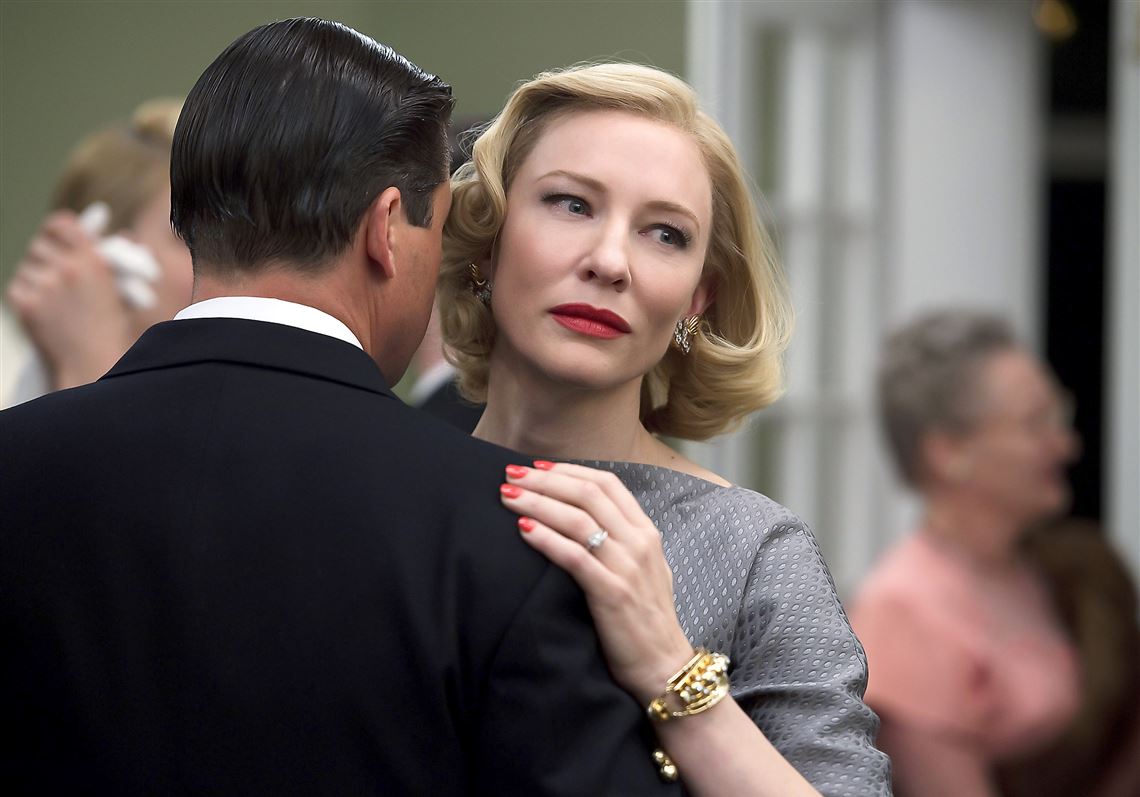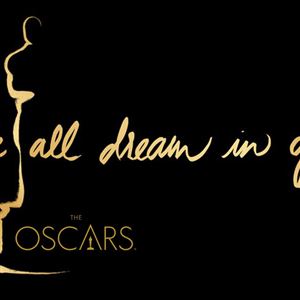Hard to believe it has been a decade since Heath Ledger and Jake Gyllenhaal got it on, shockingly, in “Brokeback Mountain.” Even harder to believe, a few decades before that, they could take away your child if they caught you in same-sex love.
The 1950s in America were neither kinder nor gentler than today, but they were simpler: Girls get dolls for Christmas, boys get trains. Our first telltale clue about one of the two heroines in “Carol” is that she wanted a train set.
Based on Patricia Highsmith’s 1952 novel “The Price of Salt,” the film at hand is the vividly realized, beautifully acted, sexually candid tale of two women of different ages and backgrounds who find themselves in love and challenged — to say the least — by conventional norms.
Therese (Rooney Mara), a soulful young salesgirl forced to wear a Santa’s cap in her Manhattan department store, is dreaming of a more meaningful life when Carol (Cate Blanchett) — an alluring, upper-crust blonde encased in mink — appears at the toy counter in search of a Christmas present for her daughter. Instantly and mutually entranced, they contrive to meet.
Starring: Cate Blanchett, Rooney Mara, Kyle Chandler.
Rating: R for a scene of sexuality/nudity and brief language.
Talk about a study in contrasts: The older woman is so elegant, worldly wise and self-assured. The younger one, so diffident and tentative — particularly toward her overeager boyfriend, Richard (Jake Lacy).
“Would you like to marry him?” Carol asks.
“Oh, I don’t know...,” Therese replies. “I barely know what to order for lunch.”
Carol’s loveless marriage to a rich investment banker (Kyle Chandler) is on the rocks. There was big trouble when he learned of her relationship with best friend Abby (Sarah Paulson) years before. There’ll be much bigger trouble if he learns of her involvement with Therese.
In truth, neither of the two female protagonists is terribly deep. They’re just terribly, powerfully attracted to each other — with lots of negative reinforcement from the terribly chauvinist guys. They are bouncing off one another like pinballs, unpredictably, in terms of inner turmoil and outer tempest alike.
Actress Blanchett has likened it to the universal heartbreak that often comes with falling in love: “You risk being out of control [which is] part of the intoxicating thrill.” Actress Mara says that, when falling in love, “your mind works like a criminal’s” — constantly concocting scenarios and calculating the next move.
“Carol” is directed by Todd Haynes, who previously guided Ms. Blanchett through her Oscar-nominated performance as a Bob Dylan avatar in “I’m Not There” (2007). It is gorgeously photographed by Ed Lachman on Super 16mm film through windows, mirrors and snowflaked reflections, with exquisite attention to period details: the clothes, hairstyles, record players, lipstick, compacts, cigarettes — you can virtually smell the perfume Carol dabs on her wrists! And you can revel (as Therese does) in the sensual close-ups inside Carol’s vintage champagne-shade Packard, when her perfectly gloved hand turns the wheel to a seductive radio tune in the Holland Tunnel.
Speaking of music, the entire picture is infused with super music of the period, highlighted by Vince Giordano & the Nighthawks’ songs and Billie Holiday’s “Easy Living.”
But it is highlighted most by Ms. Blanchett in the title role, a performance rivaling the ones for which she won Oscars in Woody Allen’s “Blue Jasmine” and in Martin Scorsese’s “The Aviator” (as Katharine Hepburn). She resembles the great Gena Rowlands here. You gotta love just watching her take off an earring for a phone call.
Ms. Mara (of “Girl With the Dragon Tatoo” fame) is her lesbian-thespian match, looking astonishingly like Audrey Hepburn — mute with longing throughout, but especially in their one and only delicate sex scene.
Therese, FYI, is author Highsmith’s secret character. She published the book originally under one of the 40 pseudonyms she used during a stellar career of writing psychological thrillers with well over a dozen film adaptations, including Hitchcock’s “Strangers on a Train” and “The Talented Mr. Ripley” (also starring Ms. Blanchett).
There’s a bit too much eye play for my taste — too much soap-operatic lingering at the end of scenes — and some dubious plot devices, including a random gun in a suitcase and the sudden reappearance of Abby. But the nuances of these characters' inner lives feel real, as does their courage to be who they want to be in hostile, uncharted territory.
The love story swells gradually. The two actresses glow. They speak mostly in glances, gestures and touch. The story resonates with subtle, erotic melancholy. It is lush, lovely, evocative filmmaking at its best.
Post-Gazette film critic emeritus Barry Paris: parispg48@aol.com.
First Published: January 8, 2016, 5:00 a.m.

















